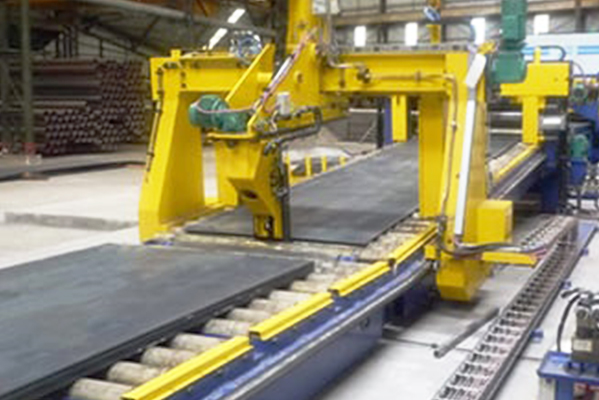Navigation Menu
Contact Us
- Email:
- info@wxavatar.com
- Address:
- Yurong Village, Yuqi Street, Huishan District, Wuxi, China.
Release Date:Apr 09, 2025 Visit:76 Source:Roll Forming Machine Factory
Robot palletizing is the process of using robotic systems to automatically stack and arrange products, boxes, or containers onto pallets in a structured and efficient manner. This automation technology is widely used in manufacturing, warehousing, and logistics to improve productivity, reduce labor costs, and enhance workplace safety.
How Robot Palletizing Works
A typical robotic palletizing system consists of:
Industrial Robots – Equipped with specialized grippers or end-of-arm tools (EOAT) to handle different products. Common types include articulated robots, gantry robots, and delta robots.
Conveyor Systems – Transport products to the palletizing station.
Vision Systems (Optional) – Help robots identify product orientation and adjust stacking patterns.
Software & Controls – Manage palletizing patterns, layer formation, and robot movements.
The process involves:
Picking up items from an incoming conveyor.
Arranging them in pre-programmed patterns (e.g., layer-by-layer).
Placing them precisely on a pallet for stable transportation.

Benefits of Robot Palletizing
Increased Efficiency – Robots work continuously without fatigue, speeding up palletizing tasks.
Consistency & Accuracy – Ensures uniform stacking, reducing product damage and unstable loads.
Labor Savings – Reduces reliance on manual labor for repetitive and physically demanding tasks.
Improved Safety – Minimizes workplace injuries associated with heavy lifting and repetitive motions.
Flexibility – Can handle various product sizes and shapes with quick reprogramming.
Applications
Robot palletizing is used in industries such as:
Food & Beverage
Pharmaceuticals
Consumer Goods
Automotive
E-commerce Fulfillment
Conclusion
Robot palletizing is a key automation solution that enhances logistics and production efficiency. By integrating robotic systems, businesses can achieve faster, safer, and more cost-effective palletizing operations, making it an essential technology in modern manufacturing and supply chains.